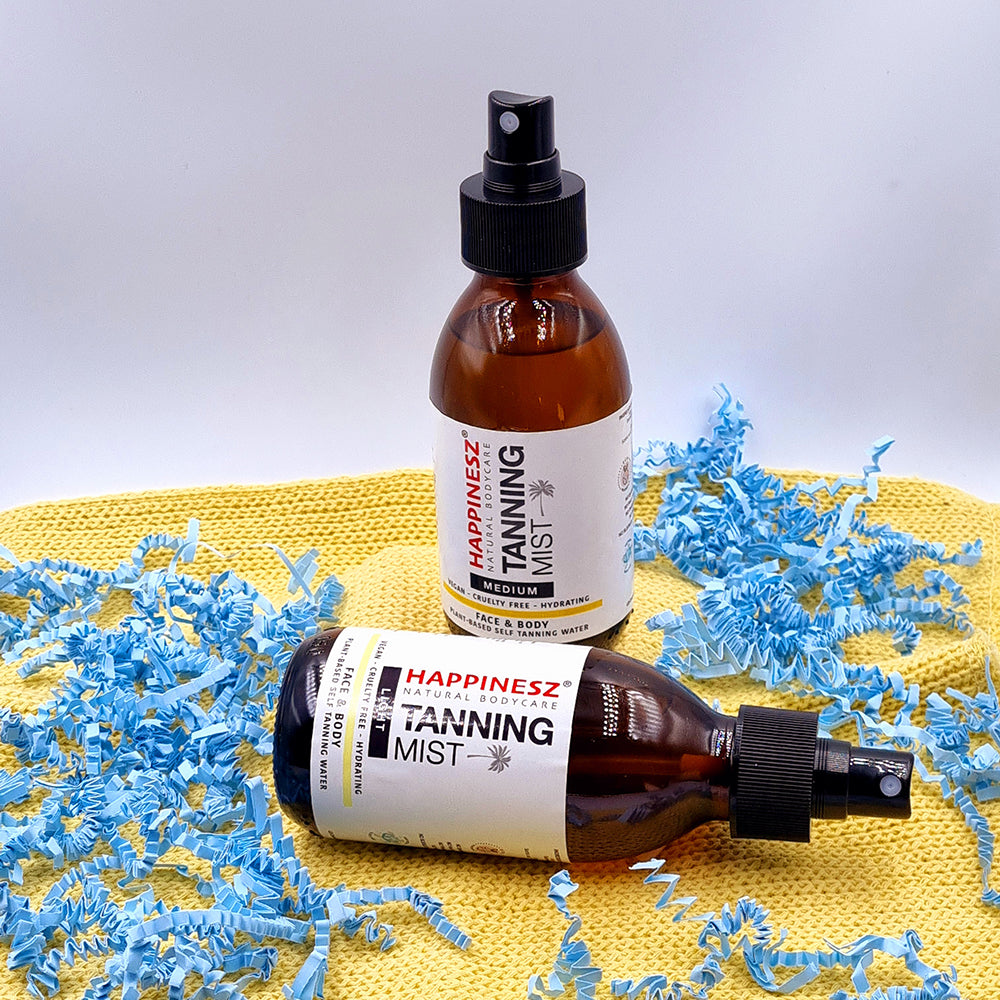The importance of Natural Skincare Post Cancer by Kirsten Cameron

The importance of Natural Skincare post cancer
It is less than three weeks until the biggest swim of my life – 36km (more or less) from the island of Capri to the metropolitan city of Naples in Italy.
One of the most important things to finalise is sunscreen! Swimming 36km in the sea in the southern Italian sun requires a good quality sunscreen. I know from my swim in Lake Zurich in 2022 that Happinesz is absolutely brilliant – it stays on and I did not get burnt at all. So naturally this is going to be my first choice.
This swim has been a long time coming – first organised by some friends in Australia, it was originally planned for 2022. But with COVID lockdowns still happening particularly in Melbourne, Australia, it was delayed until 2023. Things were going well – I was just starting to pick up my training, my entry was confirmed, I had completed my qualifying swim the previous year, all bookings had been made. And then – I was diagnosed with breast cancer. So the swim was off. But fortunately, treatment went well and one year later I am now more than ready to swim.
When choosing my sunscreen, what is now even more important post cancer, is that I have a natural product to use that is not full of chemicals. Happinesz once again ticks that box. I want to avoid any extra chemical exposure as firstly I think my body has been through enough, and then also it is now acknowledged that there is a link between chemical exposure and cancer risk. Some sunscreen may contain chemical compounds that can cause allergic reactions, and also, some carcinogens have been found in popular sunscreens. So this is something we should all be concerned about.
The key ingredient in this sunscreen is zinc oxide which is beneficial as it acts as physical barrier with very little absorption through the skin and, according to research, has very few side effects – even more so when its non nano zinc oxide which Happinesz is. In fact the FDA in the USA considers zinc oxide ‘safe an effective for sunscreen use.” This was also shown in a study on repeated application of zinc oxide which found that while zinc concentrations on the surface of the skin were evident, these did not enter the viable epidermis or cause cellular toxicity.
Not only does Happinesz use non nano zinc as the active ingredient it also avoids any other chemicals. I feel comfortable in the knowledge that when I am swimming for such a long time exposed to the sun, I am not only going to be protected as best I can from sunburn, I am also going to be protected as best I can from extra exposure to potentially unhealthy chemicals and carcinogens.
One final benefit – non nano zinc sunscreens may be better for the environment than other chemical sunscreens so I can swim knowing I am not poisoning the Mediterranean Sea either!
Author: Kirsten Cameron
References
- com (2024) Carcinogens in Sunscreen, ConsumerLab.com. Available at: https://www.consumerlab.com/answers/cancer-causing-compounds-benzene-benzophenone-in-sunscreen/carcinogens-sunscreen/ (Accessed: 17 June 2024).
- Downs, C.A. et al. (2015) ‘Toxicopathological effects of the sunscreen UV filter, oxybenzone (benzophenone-3), on coral planulae and cultured primary cells and its environmental contamination in Hawaii and the U.S. Virgin Islands’, Archives of Environmental Contamination and Toxicology, 70(2), pp. 265–288. doi:10.1007/s00244-015-0227-7.
- Hamblen, H. (2022) The environmental impacts of reef-safe sunscreen and how to choose the best one, Org. Available at: https://earth.org/reef-safe-sunscreen/ (Accessed: 17 June 2024).
- Hegde, A.R. et al. (2024) ‘Advancements in sunscreen formulations: Integrating polyphenolic nanocarriers and nanotechnology for enhanced UV protection’, Environmental Science and Pollution Research [Preprint]. doi:10.1007/s11356-024-33712-0.
- MacMillan, C. (2022) Is my sunscreen safe?, Yale Medicine. Available at: https://www.yalemedicine.org/news/is-sunscreen-safe (Accessed: 17 June 2024).
- Mohammed, Y.H. et al. (2019) ‘Support for the safe use of zinc oxide nanoparticle sunscreens: Lack of skin penetration or cellular toxicity after repeated application in volunteers’, Journal of Investigative Dermatology, 139(2), pp. 308–315. doi:10.1016/j.jid.2018.08.024.
- Pros and cons of Zinc Oxide Sunscreen (no date) Tiege Hanley. Available at: https://www.tiege.com/blogs/news/zinc-oxide-sunscreen-3-pros-and-cons (Accessed: 17 June 2024).
- Ruszkiewicz, J.A. et al. (2017) ‘Neurotoxic effect of active ingredients in sunscreen products, a contemporary review’, Toxicology Reports, 4, pp. 245–259. doi:10.1016/j.toxrep.2017.05.006.


